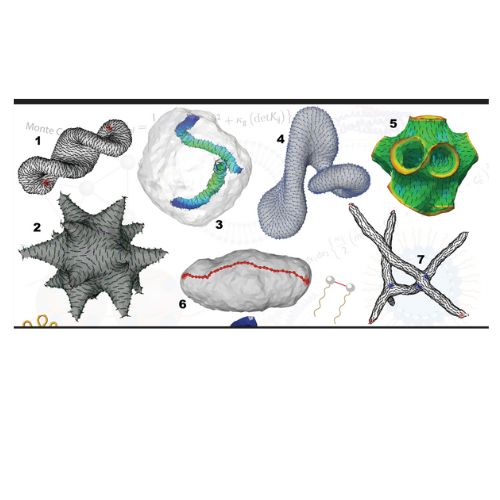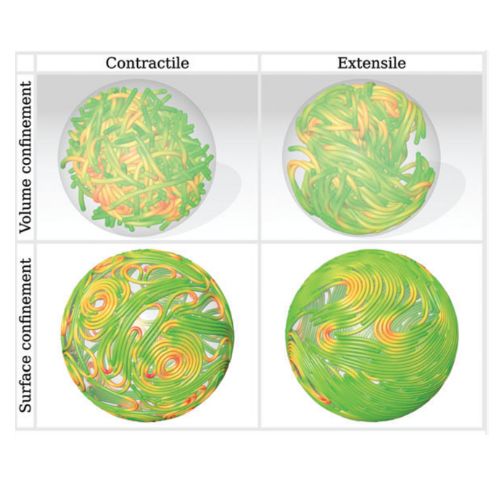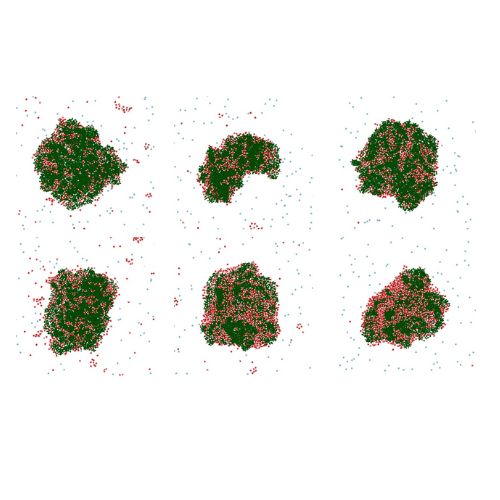Research
Overview
The research work of Prof. P. B. Sunil Kumar ( PBSK) group is mainly focused on Soft and Biological matter with special emphasis on lipid membranes, polymers and colloids. The major activity of the group have been in employing computer simulation techniques to investigate the properties of these systems in its equilibrium, non-equilibrium and active steady states
Current Research Topics
- Reversible shape morphism of Vapour-responsive polymer films
- Multiscale modelling of chromatin assembly and dynamics
- Polymer models for Chromatin organization
- Active membrane recycling induced morphology changes in vesicles
- Tumbling dynamics of single Active polymer in shear flow

Biological Physics
Apart from partitioning the inner and outer environments of the cell, biomembranes also act as support for complex and specialized molecular machinery, crucial for various physiological functions and trans-membrane transport. Though biological membranes are very complex and can in general be far from equilibrium, knowledge of the properties of simple model membranes will be extremely useful in providing understanding of this molecular machinery. Such a study should also be essential for developing new applications involving liposomes. With this as the motivation we have been studying the dynamics of two component fluid membranes and membranes with protein like inclusions using a variety of techniques
Active Matter
The mechanical energy thus obtained not only produces motion of the motors but also generates reaction forces on the microtubule, which can deform elastically in response. Hydrodynamic interactions between the motors and between segments of the microtubule must be taken into account since both are surrounded by a fluid. This combination of elasticity, autonomous motility through energy conversion and hydrodynamics is found in biomimetic contexts as well. A recent example is provided by mixtures of motors which crosslink and walk on polymer bundles. A remarkable cilia-like beating phenomenon is observed in these systems.


Soft Materials
Interaction between charged vesicles: They observed monoclonal antibodies – mediated coalescence of negatively charged giant unilamellar phospholipid vesicles upon close approach of the vesicles. This feature was theoretically described by using functional density theory and Monte Carlo simulations of two interacting flat electrical double layers where charged surfaces are generated by phospholipid headgroups. Antibodies were considered as dimeric counterions of finite dimensions. Spatial distribution of charge within a counterion is considered by two effective charges at a fixed distance. The minimization of the free energy was performed to obtain the equilibrium configuration of the system. Both, the rigorous solution of the variational problem and the Monte Carlo simulations show that orientational ordering of counterions subject to the gradient of the electric field gives rise to an attractive interaction between charged surfaces for high enough charge densities of the interacting surfaces and large enough separations between charges within the counterion.


